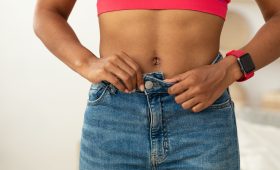The ketogenic (keto) diet has become one of the most popular nutritional approaches in recent years. Its basic principle is to minimize carbohydrates, the body’s main energy source, to make fat the primary fuel. This metabolic state is called ketosis. Choosing the right foods is vital to reach and maintain ketosis. This diet is preferred not only for weight loss but also for benefits like blood sugar control, mental clarity, and increased energy levels.
However, the success of the ketogenic diet is not just about cutting carbs. To get all the vitamins, minerals, and fiber the body needs, it’s necessary to focus on nutrient-dense, whole, and unprocessed foods. In this article, we will detail 20 foods that will form the basis of your ketogenic diet, which are both filling and delicious.
Avocado
Avocado is an indispensable part of the keto diet. It is rich in monounsaturated fatty acids and contains very few net carbs. Approximately 100 grams of avocado contains only 2 grams of net carbs. It is also a rich source of potassium, which helps to alleviate the symptoms known as “keto flu” that can appear in the first days of the keto diet. You can add avocado to salads, combine it with eggs, or mash it to eat as guacamole.
Fatty Fish (Salmon, Trout, Tuna)
Fatty fish like salmon, trout, mackerel, and sardines are excellent sources of both high-quality protein and omega-3 fatty acids, which are beneficial for heart health. They contain almost no carbohydrates and are also rich in B vitamins, potassium, and selenium. Eating fatty fish at least twice a week will help you maintain a nutritional balance in your keto diet.
Eggs
Eggs are one of the most versatile and nutritious foods on the keto diet. A large egg contains about 6 grams of protein and 5 grams of fat. It is also rich in choline, B vitamins, and antioxidants. They can be prepared in a variety of ways: boiled, as an omelet, scrambled, or baked. Since eggs contain no carbohydrates, they are an ideal option for both breakfast and lunch.
Olive Oil
Extra virgin olive oil is one of the healthiest fat sources on the ketogenic diet. It is rich in monounsaturated fatty acids and supports heart health. Its antioxidant content is also high. It can be used in salads, over vegetables, or as a cooking oil. Remember to be careful not to burn the olive oil at high heat.
Hard and Soft Cheeses
Cheese is another food that makes the ketogenic diet enjoyable. Cheeses like cheddar, mozzarella, cream cheese, and goat cheese are high in fat and protein. The carbohydrate content of different cheeses may vary, so it is important to check the labels. You can use cheese as a snack, in salads, or to add extra flavor to your meals.
Coconut Oil
Coconut oil is a popular part of the ketogenic diet. It is rich in medium-chain triglycerides (MCTs), which can be quickly converted into ketones in the body. This property helps to increase energy levels and support the state of ketosis. You can add it to your coffee or use it as a cooking oil in your meals.
Meat and Poultry (Red Meat, Chicken, Turkey)
Meat and poultry are sources of high-quality protein. Red meat, chicken, and turkey are staple foods on the keto diet and contain no carbohydrates. These foods help maintain muscle mass and provide a feeling of fullness. When consuming meat, choosing fattier cuts will help you meet the diet’s fat goals.
Nuts and Seeds (Almonds, Walnuts, Chia Seeds, Flaxseeds)
Nuts and seeds are rich in healthy fats, protein, and fiber. Options like almonds, walnuts, hazelnuts, macadamia nuts, chia seeds, and flaxseeds are great snacks on the keto diet. However, portion control is important because their carbohydrate content can vary. Chia and flaxseeds also contribute to digestive health due to their fiber content.
Butter and Ghee
Butter and Ghee (clarified butter) are pure fat sources that can be safely consumed on the ketogenic diet. Especially butter from grass-fed animals is rich in beneficial nutrients like Vitamin K2 and conjugated linoleic acid (CLA). It can be used in meals, over vegetables, or to make bulletproof coffee.
Low-Carb Vegetables
Vegetables are the best source of micronutrients, fiber, and antioxidants on the keto diet. Green leafy vegetables like spinach, kale, and lettuce, and non-starchy vegetables like broccoli, cauliflower, and asparagus are perfect for this diet. Unlike high-carb vegetables (potatoes, corn), these vegetables contain very few net carbs and help to fill your stomach.
Berries (Raspberries, Blackberries, Strawberries)
Fruits are generally limited on the keto diet, but berries like raspberries, blackberries, and strawberries can be consumed in small portions due to their low net carb content. These fruits are also rich in powerful antioxidants.
Cream and Sour Cream
Full-fat cream and sour cream are great options for adding flavor to coffee, soup, or sauces. They contain very few carbohydrates and help you add extra fat to your diet. It is important to choose sugar-free versions.
Cocoa and Dark Chocolate
Cocoa is a great source of antioxidants. Dark chocolate with a cocoa content of 70% or higher is suitable for the keto diet when consumed in moderation. The high cocoa content keeps the carbohydrate and sugar amounts low.
Olives
Olives are rich in healthy fats and have a low carbohydrate content. They can be used in salads, as a snack, or to add flavor to your meals. Both black and green olives contain heart-healthy monounsaturated fats, just like olive oil.
Shellfish
Shellfish like shrimp, oysters, mussels, and crab are generally carb-free and a good source of protein. Shrimp, in particular, is a very low-calorie and delicious option. When consuming them, it is important to avoid ready-made sauces and to season them with your own spices.
Spices and Herbs
Spices and fresh herbs are a great way to flavor your food on the ketogenic diet. Spices like salt, pepper, thyme, cumin, rosemary, basil, and parsley contain no carbohydrates and add depth to your meal.
Vinegar (Apple Cider Vinegar, Balsamic Vinegar)
Vinegar contains no carbohydrates and can be used to add flavor to salad dressings. Apple cider vinegar, in particular, is thought to have some benefits in balancing blood sugar levels.
Mushrooms
Mushrooms are a very low-carb and delicious vegetable. They can be sautéed, used in soup, or in an omelet. They are also rich in B vitamins and potassium.
Plain Yogurt and Kefir (Full-Fat)
Full-fat plain yogurt and kefir can be included in the keto diet as long as they are consumed in moderation. As fermented foods, they are rich in probiotics and contribute to digestive health. It is critical to choose unsweetened versions.
Sugar-Free Beverages
Water, coffee, and tea are the staple beverages of the ketogenic diet. Drinking enough water is vital to prevent dehydration during ketosis. Consuming coffee and tea without sugar, but with milk or cream, is suitable.
What to Pay Attention To
- Hidden Carbs: One of the biggest traps on the ketogenic diet is hidden carbohydrates in sauces, salad dressings, and processed foods. Carefully reading food labels will prevent your diet from being derailed.
- Portion Control: High-calorie foods like nuts and cheese can be easily over-consumed. It is important to keep portions under control to avoid falling out of ketosis.
- Electrolytes: In the initial stages of the diet, the body tends to lose water and sodium. Therefore, paying attention to salt, potassium, and magnesium intake will help minimize “keto flu” symptoms (headache, fatigue, lethargy).
Conclusion
The ketogenic diet can be very filling and nutritious when implemented with proper planning and the right foods. These 20 foods form the basis of your diet, offering both flavor and nutritional variety. Remember, the best way to make your diet sustainable is to find foods you love and enjoy.



